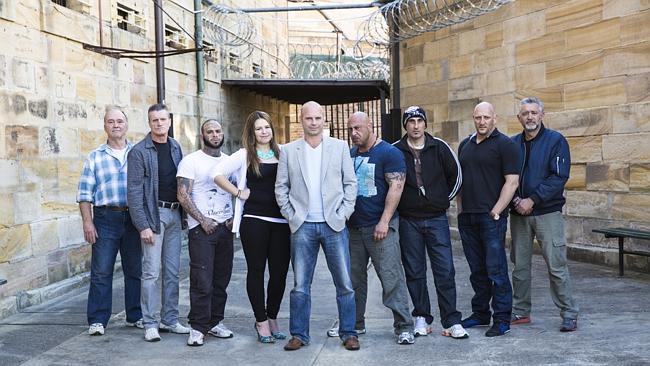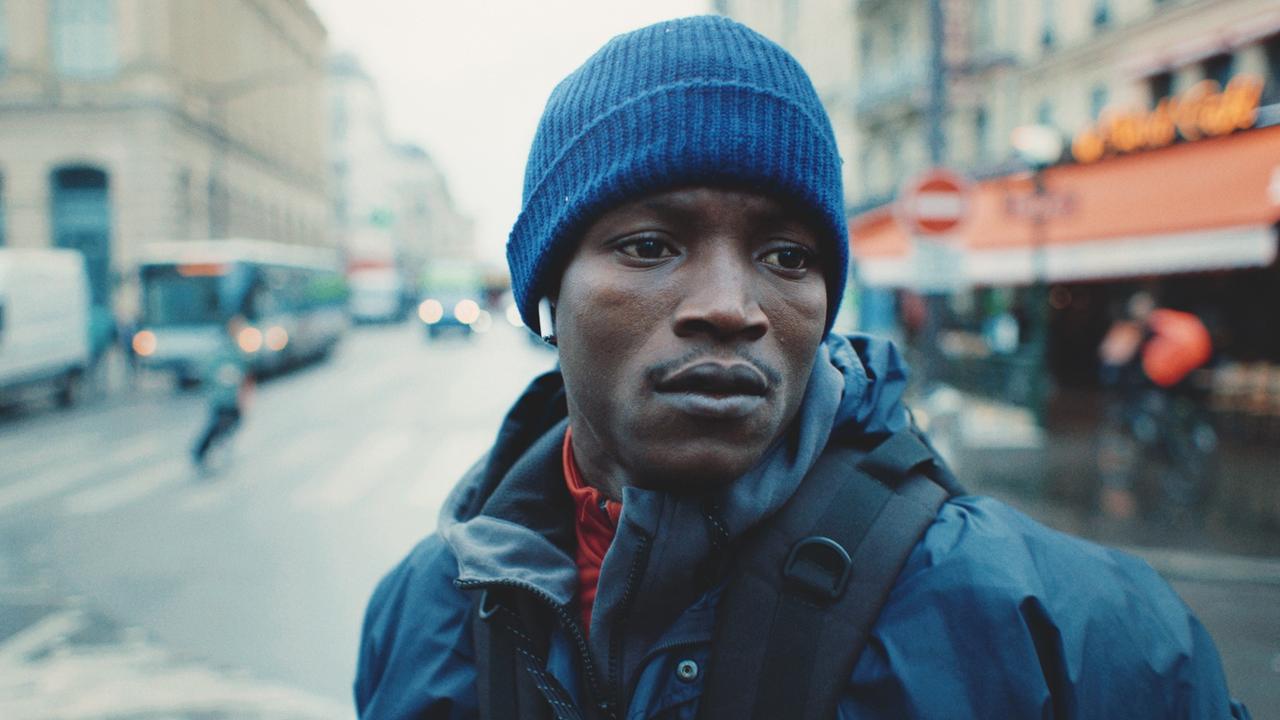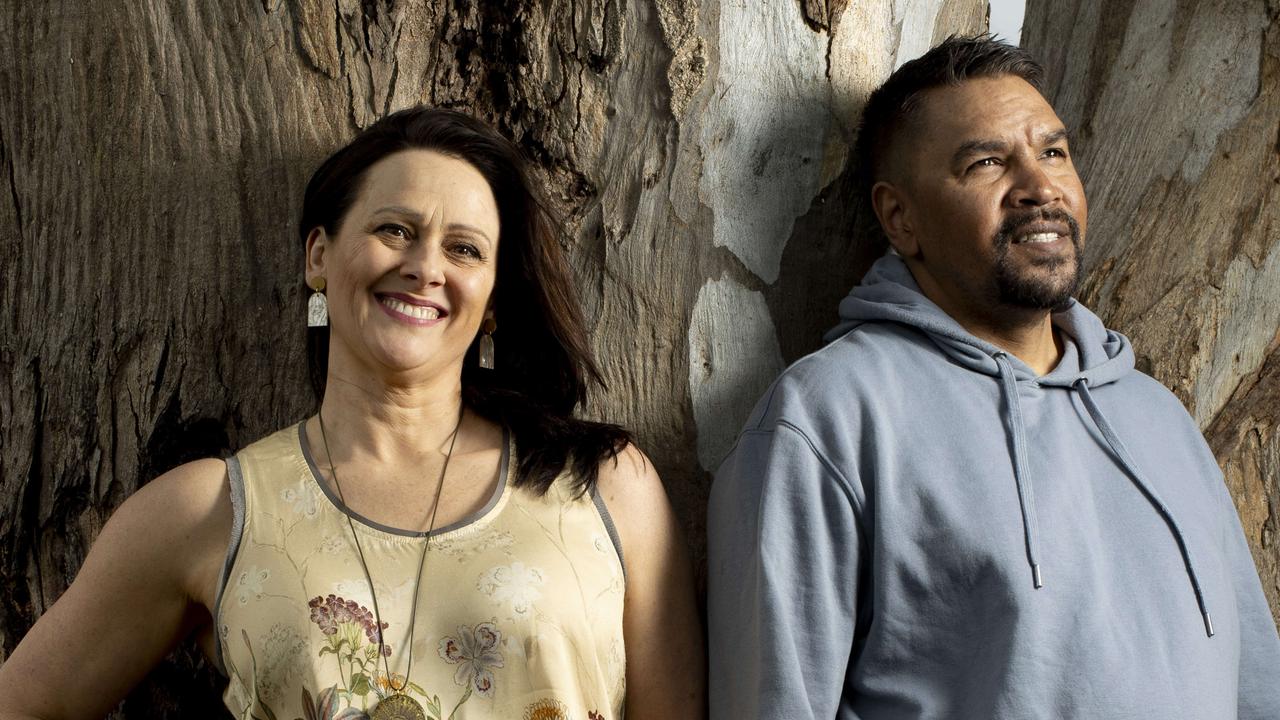Taking on the Chocolate Frog is a captivating jigsaw
THERE’S redemptive power in a show about ex-cons playing hardened crims.

THESE days everyone in television spends waking nights dreaming of those piles of gold called TV formats, either new ones or ingenious ways of adapting the already successful ones. Well, creator and executive producer Simon Steel has come up with a cracker, an irresistible piece of innovative arts programming called Taking on the Chocolate Frog.
Produced by Screentime for the industrious and always entertaining Studio, and produced with funding from Foxtel’s Production Fund, it’s centred on an unlikely troupe of Shakespearean wannabes, mostly hardened ex-prisoners. It’s directed by Debbie Cuell, whose cultural contribution as a TV documentary filmmaker is awesome, even if she remains largely anonymous to the public. And the complex three-parter is inspired by the work of a criminal turned award-winning playwright, Jim McNeil.
McNeil was arrested, tried, convicted and sentenced to 17 years in prison. In Sydney’s Parramatta Correctional Centre, he joined the Resurgents Debating Society, a small group of prisoners who would meet in the prison chapel to debate prison visitors, write and paint. In 1970, McNeil wrote his first play, The Chocolate Frog. It was performed by prisoners for Saturday morning visitors and was reviewed by this paper’s theatre critic at the time, Katharine Brisbane. It was the start of a brief celebrated career that ended sadly in the gutter.
I knew him well, having played him in a Melbourne Theatre Company production of his full-length autobiographical play, How Does Your Garden Grow, in 1974. It was rehearsed with McNeil and his crony, a bloke with a nefarious past — it was easy to feel the chill of his shadow — called Jack Karlson, aka The Hun, sitting in most rehearsals, peering severely at me. McNeil was charming, with a wonderfully poetic turn of phrase, and talented, but could turn on the spin of a 5c coin.
The three-part series challenges these ex-cons, plus a couple of guys who have lived hard, desperate to reject the “jailhouse mentality” of constant incarceration. They’re all students at Grant Thompson’s regular weekly acting classes held in Sydney’s Kings Cross above a strip club, and Thompson requires them to rehearse and stage McNeil’s breakthrough play. “That’s the worst name I ever heard,” exclaims one of the actors, the hulking, brooding Peter Sammak, once, when much younger, a “known” person around the Cross. Thompson’s got his work cut out from the start.
There’s a reality element to it: Will they be able to do the play? And how many of them just won’t crack being straight for the time it takes to rehearse it? Some do seem to fall by the wayside, briefly returning to jail or hitting the drugs again, though the central cast certainly is a stalwart lot. As Thompson says, “When you look at the heads of some of the guys I teach, you know they’ve been through something extraordinary.”
Cuell, a distinguished veteran of the observational documentary, gave us the passionate Country Town Rescue on the ABC a couple of years ago, providing a nice glimpse into a national psychology that still, if only just, prizes the bush as the home of a distinctly Australian way of life. It was about the way a group of people in central-western NSW worked together to save a small historic town with the wonderful name of Trundle.
Like that format, Chocolate Frog also stems from the traditional fly-on-the-wall convention, where the filmmaker is invisible and events are captured largely as they happen, with little analysis or comment. The stories are then scripted to propel them at the necessary rate within the requirements of the competitive timeslot for which the program is intended. And in this series she cleverly juxtaposes the layers of Steel’s complex format. She pitches it somewhere between a reality show (though she’s not keen on that description), a social experiment, a biography, an arts program, and a conventional observational series.
“At the start I knew there were three main large elements that we had to weave together into a seamless narrative — that was the biggest challenge: three strands that weave together and comment on and echo each in different ways,” says Cuell. “There’s the personal stories of the cast; the story of the drama coach taking his actors on their journey to perform the play; and the third layer is the Jim McNeil biography. There was a lot of jigsaw involved.”
Unlike most observational doco series, this one couldn’t simply be filmed as it unfolded, she says: “We had to really think hard about how to bring those layers together before we had any material. The cast’s backstories were key to the jigsaw because of the parallels between the lives of the cast and the life of Jim McNeil, which gave us a lot of opportunities to weave in the McNeil narrative.”
It’s a lovely notion and makes for riveting TV — a group of hardened ex-crims learning to be actors so they can portray a group of hardened crims in a play written by an imprisoned armed robber 43 years ago. It’s also rather ironic as these recidivists seek some form of redemption — a way out of what seems an inevitable return to prison — through the transformative skills of those psychological shape-changers.
The irony is that most professional actors see themselves as prisoners waiting for release.
Any Australian actor will tell you that all too often the life they lead is a joyless one of small-time heartbreak and quiet desperation, rumour and grievance — much of it spent disguising their depression. And that’s when times are good. The first thing you learn about acting is that being able to do it is considerably less important than being able to satisfy some casting director’s whim, fantasy or exasperated expectation. They learn this too, our real-life former prisoners, as they jostle for parts trying to impress the exacting Thompson.
In their very different ways, they’re all good-hearted souls, and you can’t help but wish them well. And, as the first episode unfolds, you wonder whether they will ever become convincing actors, even though Thompson is obviously a fine, empathetic teacher.
You can easily appreciate why acting is so important to these guys, out of jail but imprisoned now by economic, social and economic responsibilities; the actor’s way does seem alluring, as the best flaunt a mental virtuosity and a transformative genius. There’s more irony in that their art is in making the false seem genuine, the kind of thing confidence tricksters get put into prison for.
As the men grapple with notions of performance, you can see in powerful process the way the theatre is still an arena for telling the naked truth, and as that fine critic Roger Lewis said, “a machine for exploring psychology’s enchanting slipperiness”.
There’s a great scene where Sammak reveals that Thompson has helped him understand the importance of what directors call the character’s “thought process”, the way dialogue can be broken up to appear more realistic. “So when we talk we really gotta take a breath, and wind back, and think. It’s changed everything; f..k man, education is gold.” The Coen brothers couldn’t have said it better.
Malcolm Robertson, who directed the original Chocolate Frog and the McNeil play I appeared in, features in the series as a mentor to the actors. “For Jim McNeil still to be produced on stage and on TV 40 years after the first production of The Chocolate Frog is an indication of Jim McNeil’s status as a playwright,” he says.
Although the plays could only have been written in the late 60s and early 70s, they are emblematic of that time and possess a timeless humanity that cries out for our society to come to terms with rehabilitation. In his private life, McNeil successfully obliterated what he wrote about in his plays and, in a way, the society (Sydney go-getters) that initially feted him and rejected him when he challenged them. “One tragedy doth feed on another.” It’s now a TV great story.
Taking on the Chocolate Frog, Monday, 9.30pm, Studio.


